The Manas Epic
Specialist Derya Soysal, Dr. Medihanur Argali
“Days passed, years passed. Despite being caught between the Kalmyks and the Manchus in Altai, the Kyrgyz revived. They sought out their Turkic kin and established connections. Their wealth increased, forty families became seventy, they formed an army and waved their crescent-marked flag, intimidating their enemies.”
The mythological epics of the Turkic peoples are well known, and among the most famous is Manas, one of the oldest Turkic epics, with significant symbolism in Kyrgyz history. It dates back to between the 8th and 11th centuries. This hero undoubtedly bears deep traces of Turkish mythology and steppe culture (Bars, 2019). Kyrgyz Turks have a strong oral tradition. This epic is independent of other Turkish epics such as Creation and Derivation, Migration, Ergenekon, Shu, and Oghuz Khan, and it is the world's largest epic, containing more verses than the Kalevala of the Finns, the Nibelungen of the Germans, the Ramayana of the Indians, and the Iliad and Odyssey of the ancient Greeks (Islamansikopedisi.org). Indeed, the Manas epic, belonging to the Kyrgyz Turks, is the world's longest epic, containing 400,000 verses (Akyüz, 2010). The oldest source mentioning the Manas epic is Seyfeddin Molla's Majmûu't-tevârîh, written in the 16th century. Manas is presented as a historical figure and soldier (Islamansikopedisi.org).
Van der Heide (2008) writes that the Manas epic is of vital importance in Kyrgyzstan today. Everyone knows it, and the character is prominent in all forms of media. In other words, it's the Odyssey for the Kyrgyz. Reichl (2001) specifies that the epic of Manas is not widespread outside of the Kyrgyz community. "Manas is, like the Homeric epics, an epic in the Hegelian sense: it expresses in a poetic way the ideals and aspirations, the morals and traditions, the habits and the conception of the world of an entire people."
The epic of Manas relates the struggles waged by the Kyrgyz against their multiple oppressors. Legend has it that Manas was the first to unify the Kyrgyz tribes and give them territory. He had to respond forcefully and ensure, through daring attacks, control of his regions against these antagonistic forces (Bruley, 2021). His fight was continued by his son Semetej and his grandson Sejtek (Bruley, 2019). The Kazakh scholar Chokan Velihanoglu was the first to introduce the epic to the scientific world. This Kazakh prince, a descendant of Genghis Khan, compiled a variant of the epic during his trip to Kyrgyzstan in 1856, translated it into Russian, and published it in the journal of the Russian Geographical Society in 1861 under the title "Kökütey Khan's Ash." The Manas Epic is the world's longest epic and contains important information about the beliefs and daily lives of not only the Kyrgyz but also the Turkic world. Velihanoglu, who made one of the first editions of the epic, gave a successful description of the importance of Manas, which is a single epic covering the entire folk literature of the Kyrgyz. "This work, which is called Kyrgyz Iliad, contains almost all kinds of information about Kyrgyz lifestyles, customs, morals, and religious beliefs, geography, medical knowledge, relations with other nations" (İnan, 1987).
Later, W. Radloff compiled and transcribed fragments of Manas during his trips to Kyrgyzstan in 1862, 1864, and 1869, and published them in Kyrgyz-Russian-German in volume V of his Proben der Volkslitteratur der türkischen Stämme (St. Petersburg 1885). Thirteen variants of the Manas epic have been compiled to date, most of them published. Some are still in manuscript form. Kazakh writer Mukhtar Avezov, who has published important works on the epic, continued his work, begun in 1930, for thirty years and revealed many variants of the epic alive among the population.
Kyrgyz, Kazakh, and Uzbek researchers, as well as many Turkish scientists such as Abdülkadir İnan, Emine Gürsoy-Naskali, Naciye Yıldız, and Tuncer Gülensoy (Islamansikopedisi.org), are also working on the epic. The main reason for this, as mentioned before, is that, in addition to the importance of the Manas Epic in Kyrgyz literature and history, it is also extremely important for Turks, Kazakhs, and other Turkic groups.
In 1995, the epic of Manas was highlighted on the international cultural scene during the celebrations of its supposed millennium. Subsequently, the epic's prestige fluctuated over the years, finally disappearing from the political scene between 2005 and 2010. In 2009, China, in the name of its Kyrgyz minority, registered Manas at UNESCO, causing a scandal in Kyrgyzstan. Until 2013, when Kyrgyzstan, in turn, registered Manas (more precisely the epic trilogy Manas, Semetej, Sejtek) at UNESCO – it was a real comeback of Manas taking place within the country (Bruley, 2019).
The first part of the epic, entitled "Manas," relates events such as the birth of Manas, a Kyrgyz hero, his presentation as a powerful man, his fame in the wars between the Kyrgyz, his successes against the Kalmyks, the uniting of the Kyrgyz under a single flag, and the saving of his province from enemy invasion. We can therefore understand that Manas plays a key role in the construction of the Kyrgyz identity and in Kyrgyz history in general.
It is important to understand who Manas Han is. According to the information given in this epic, Manas is the son of Kara Khan's son, Yâkub (Cakıp) Khan, and his wife Çıyrıçı, daughter of Haydar Khan. The name means "intelligent, clever" (Gülensoy, pp. 16-19). Hızır protects Manas, who begins to speak from the cradle. Manas grows up quickly and becomes a brave young man; he extorts the Chinese from Kashgar and drives them east.
The Kyrgyz epic trilogy, Manas, Semetey, and Seytek, describes the process of uniting scattered tribes into a single nation. This trilogy expresses the historical memory of the Kyrgyz people and has survived thanks to a community of male and female epic narrators of all ages. According to research, the Manas epic began to take shape during the wars with the Uyghur Turks and the Chinese in the years when the Kyrgyz established a state in the Yenisei and Minusinsk steppes around 840, then in the 16th-17th centuries, during the wars between the Kirghiz and the Kalmyks or the Buddhist Kalmyk Mongols and the Chinese with the Muslim Turkic tribes of Central Asia. It can therefore be said that this epic plays a key role in Kyrgyz history (Islamansikopedisi.org). The Russians, and especially the Soviets, wanted to appropriate elements of the epic, even to the point of praising the Russian tsar. However, with the independence of Kyrgyzstan, there was talk of removing the elements introduced in the 20th century by the Russians (Kallimci, 2013).
The Manas epic is an original epic, multicolored in terms of ancient Turkic national characteristics and blended with the unique idioms of the Kyrgyz language. In addition to folklore, traditions and customs, beliefs, customs, ceremonies, life on the steppes, the ethnography of the Kyrgyz Turks (clothing, tent life, animal husbandry, camel and horse harnessing, culinary culture such as utensils, pots and pans, food and drink, etc.), proverbs, it also contains invaluable elements for the history of the Turkic language. It is also a treasure trove of onomastics, containing names of people, clans, tribes, clans, tribes, communities, and various animal names. The lives and characteristics of some of the heart heroes such as Abeke, Abılay, Açık, Ağış, Acıbay, Ak-Erkeç (woman), Akılay/Nakılay (woman), Ak-Kıyaz, Akpay-Mamet mentioned in the epic are similar to those of Turkish epics such as Oğuz Kağan, Dede Korkut, Köroğlu (Islamansikopedisi.org).
Van der Heide (2008) notes that the discovery of Manas was very important for Western academics. Not only is the legacy of oral tradition remarkable, but also the supernatural dimension, the spirits (arbak) of Manas.
In the epic, particular attention can be paid to female soldiers. Yilmaz (1999) writes that in the Manas epic, women occupy an important place. He explains this by noting that in the epic, there are numerous instances in which the female hero plays the central role in the story. Akyüz (2010) shows that the epic features female heroes, including Kanıkey, Manas' wife. The female ALP warrior doesn't give up the fight and, if necessary, protects men from enemy attacks. In the chapter entitled "Kanıkey saves Manas from death," it is said that Kanıkey saved Manas, who was a prisoner of the Kalmyks. "She gathered her braids and tied them on her head, put on Manas's weapons, put on his armor and rode Akkula.... Kanıkey fought like a lion... Kanıkey was wounded somewhere. Despite this, she managed to bring Manas to safety and began to heal him." (Inan, 1992, p. 43). Here, Kanıkey's intrepid struggle against the enemy, the fact that she mounted a horse, did not flee the fight despite her own wounds and saved Manas from death show the importance given to women in the epic, the place they take in society to the point of making them heroes in the most important epic in their history. In short, in the epic, female warriors are presented as Kosoy, in addition to which there are female war advisors...
Reichl (2001) writes that the Manas epic holds a crucial place in the literature of Turkic languages. He states, “With an extent of more than eight thousand kilometers as the crow flies from Yakutia in northeastern Siberia to the Turks of the Balkan Peninsula, this 'Turkish world' offers an abundant variety of cultures, religions, and social structures.”
Reichl (2001) adds, “Manas fulfills the prophecies spoken at his birth; he succeeds in defeating his enemies within and outside his tribe. Like other heroes of the heroic epic, Manas possesses impressive stature and supernatural strength; still in the cradle, he proclaims his intention to fight against the infidels.”
Today, this epic holds such a vital place in Kyrgyz culture that artists known as Manasçılar narrate the epic, playing the kopuz and singing folk songs that bring to life the speeches of the epic's heroes. The continuous narration of the trilogy can last up to thirteen hours. Performances take place at a variety of public events, from village feasts to national celebrations and festivals. Epic storytellers also provide moral and spiritual support to local communities and individuals during social events, conflicts, or disasters. They recognize the trilogy as their personal responsibility. The trilogy helps young people understand their own history and culture, the natural environment, and other peoples of the world, while giving them a sense of identity. It promotes the ideas of tolerance and multiculturalism as a component of formal education. Knowledge is passed on orally from master to apprentice, through informal education. The richness and depth of this epic are an important part of Kyrgyz culture and a cultural heritage recognized worldwide. This turbulent era was also at the origin of a new form of recitation, called ‘river recitation,’ taking place over several days, in an annual and organized manner. Bringing together on each occasion most of the country's manasçı (the bard specializing in the recitation of Manas), they aim, under the cover of a traditional form (the recitation), to make the epic popular and to reach a wider audience (Bruley, 2019).
In conclusion, the legend of Manas is considered the foundation of Kyrgyz culture. In addition to being a heroic legend, it is an important work that reflects the social life, beliefs, and language of the Kyrgyz Turks. Today, Manas is present everywhere in Kyrgyzstan. The Turkish University of Bishkek bears his name, as does the airport, and a statue of him stands in the capital. Kyrgyz poets have enriched their poems in terms of style by drawing upon popular beliefs, such as ancestor worship. In modern Kyrgyz poetry, Manas emerges before us, both as the leader of the Kyrgyz people and as a spiritual guide. These poems suggest that Manas and the values he embodies may evolve into a new ideology in contemporary Kyrgyzstan after the socialist era. It is this epic that plays a pivotal role in the shaping of Kyrgyz identity.
Nation-building in Kyrgyzstan was mostly based on Manas. But the Epic of Manas is important not only for Kyrgyzstan but also for the entire Turkic World. It is one of the unifying forces of the Turkic World and important in terms of cultural interaction between Türkiye and Kyrgyzstan. For example, the translation of the Manas Epic book was made by Marmara University Faculty Member Dr. Fakhri Solak and Deputy Chief of Staff of the President of the Kyrgyz Republic Renat Tuleberdiev. With the support of many scientists from Turkey and Kyrgyzstan, the Translation Project of a prestigious large book consisting of 3,700 pages in 3 volumes was carried out. The text in the book was published simultaneously in Turkish and Kyrgyz (source). Additionally, the Manas Monument was opened in Istanbul Sütlüce Park on August 9, 2017. Kyrgyzstan Prime Minister Soroonbai Jeenbekov also attended the opening.
A project was launched in Bursa, the cultural capital of the Turkic world in 2022, to popularize the world-famous Manas epic. Famous Manaschi storytellers from Kyrgyzstan, Kazakhstan, and Turkey attended the event. The Epic of Manas has contributed not only to Türkiye-Kyrgyzstan relations but also to Azerbaijan-Kyrgyzstan relations in a cultural context. In 2023, the Manas Epic was translated into Azerbaijani language. The publication of the book was carried out within the framework of cooperation between the Kyrgyz Embassy of Azerbaijan in order to further promote Turkic culture in the world (Turkic.world.ru).
Bibliographie
Akyüz, Ç. (2010). MANAS DESTANI'NDA ALP KADIN TİPİ. Mukaddime, 1(1), 169-180.
Bars, M. E. (2019). MANAS DESTANI’NDA KAHRAMAN TASVİRLERİ. International Journal of Language Academy, 2(2), 31-40.
Bruley, J. (2019). L’épopée de Manas: étude historique, patrimoniale et ethnographique (Doctoral dissertation, Université de Lille (2018-2021)).
Bruley, J. (2021) ESSAI SUR UNE GEOGRAPHIE EVOLUTIVE DANS L’EPOPEE KIRGHIZE DE MANAS ESSAY ON AN EVOLUTIVE GEOGRAPHY IN THE KYRGYZ EPIC MANAS. ÍNDICE/INDICE/TABLE DE MATIÈRES/INDEX, 30.
MANAS DESTANI - TDV İslâm Ansiklopedisi (islamansiklopedisi.org.tr)
TDBB (Türk Dünyası Belediyeler Birliği), https://www.tdbb.org.tr/?p=9974&lang=ru
Gülensoy, T. (2002). Manas destanı: Türkiye Türkçesiyle. Akçağ Yayınları.
İnan, A. (1992). Manas Destanı, İstanbul: MEB.
İnan, A. (1987) Makaleler ve İncelemeler, Ankara: C.I. |
|
Kallimci, İ. T. (2013). MODERN KIRGIZ ŞİİRİNDE MANAS VE MANAS DESTANI. Muğla Üniversitesi Sosyal Bilimler Enstitüsü Dergisi, (27), 89-104. |
|
Reichl, K. (2001). I. Bref aperçu de l’épopée orale turque en Asie centrale. Études mongoles et sibériennes, centrasiatiques et tibétaines, (32), 9-37.
(https://turkic.world/ru/articles/turkic_states/69031)
Van der Heide, N. (2008). Spirited performance: The Manas epic and society in Kyrgyzstan (Vol. 3). Rozenberg Publishers.
Yilmaz, M. (1999). Manas Destanının Epik Kurallara Göre İncelenmesi.
Издана книга "Эпос Манас и тюркская эпическая традиция" на азербайджанском и кыргызском языках, https://turkic.world/ru/articles/turkic_states/69031







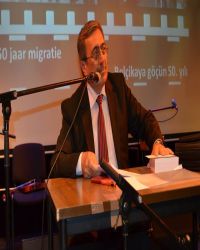
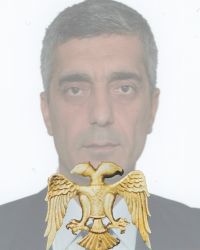













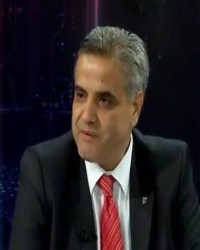

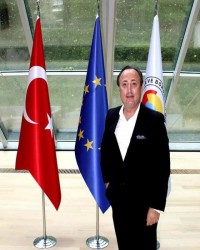

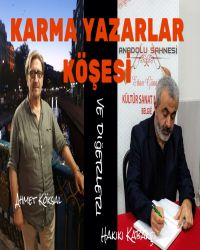
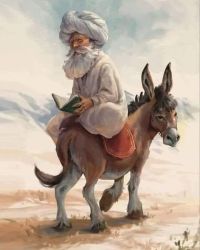

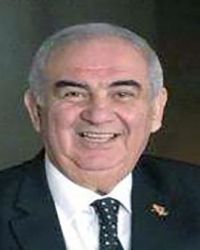













Yorum Yazın
Facebook Yorum